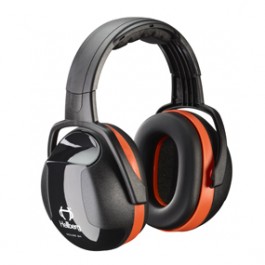Six things you need to consider during your noise risk assessments
The rst essential step you should take when you’re carrying out noise risk assessments it to start by making observations.
Observations form the basis of the HSE guidance and if done correctly they will lead the rest of your assessment. This post makes up part of our Managers Guide to Noise at Work, which you can read here.
Following this you will then be in a position to decide upon the next steps and what will be needed.
The following six points should be considered during your Noise Risk Assessments
Who’s hearing checks show early signs of Noise Induced Hearing Loss (NIHL)?
This is perhaps one of the most under-asked and yet crucial pieces of information you can use to guide your noise risk assessments as well as any other action you might take under the regulations.
If you can identify the small number of individuals who are showing signs of hearing loss very early on in their working time with you, then these people are the ones to focus on. You can increase the frequency of their hearing checks, take more measurements at their work-locations, increase the effort on noise control, check their use of hearing protection and provide more training and information to help them help you.
Where are the potentially noisy areas in the workplace?
It is important to understand where to prioritise your assessment by establishing the locations within your business where there are likely to be high noise levels. This will allow you to focus on these areas rst.
Who is working in them or visiting, and for how long?
Employees may not be working in the same areas all day and their exposure to noise might vary even if they are in one location, so patterns of working and the changing noise levels throughout the day are vital pieces of information to know.
Do you have to shout in those areas to be heard?
If you have to shout to hear someone only 1m away, then it is likely that they are exposed to above 90dBA. Care should be taken with this rule-of-thumb as it in no way confers accuracy and the only way to determine the actual level of exposure is to measure using a sound level meter.
Is there any potentially noisy mobile plant being used by employees?
You may well know what xed plant there is in your workplace, but mobile plant could be a different story, adding signicantly to ambient levels where used. You might not be
aware of this without asking the question! What you really need to know is who is using it and where?

Is any hearing protection in use, by whom and what is it?
Quite simply, you should start with the people who you think work the longest in the noisiest places and then work down from there.
If you write down all your ndings, this will make a really good start to the risk assessment document.
Become a master of your noise risk assessments on our training course-

Castle Products
CLICK HERE FOR
Information, technical data, images and pricing of all Castle Group Ltd. products -

Product Rental
CLICK HERE FOR
Hire the best equipment at a fraction of the purchase price -

Calibration Lab.
CLICK HERE FOR
Calibration and repair services from Air Samplers to Vibration Meters -

Training
CLICK HERE FOR
World class safety and environmental courses. On your site or our 4* training facility -

Consultancy
CLICK HERE FOR
Employ our expertise for both simple and more demanding issues.












